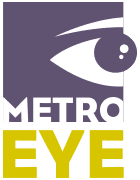
Click on “Contact Us” for SummerFest Hours and Summer closures
Myopia, also known as near-sightedness, is a visual abnormality which causes distance objects to be blurry while near objects remain clear.
Myopia often begins to develop in children as young as 6 years old as they are growing and their eyes are elongating. Children are more likely to have myopia when one or both parents are nearsighted and have lifestyles with increased time focusing up close with limited outdoor activity.

Because Myopia makes it difficult to see things from further away, parents often first learn of their child’s symptoms after they’ve started school. Academic and/or sports performance which does not align with a child’s known potential can be the first sign of myopia prior to your child complaining of any symptoms.
Initial symptoms of Myopia found during school, sports or after school activities may include:
Uncontrolled elongation of the eye can progress to High Myopia, a prescription greater than -5.00 Diopters.
High Myopia not only increases the degree of blurry vision but also the risk of vision-threatening eye conditions such as such Retinal Detachment, Glaucoma and Cataracts. Implementing Myopia Management treatments early can slow or halt the rate of eye elongation and decrease the risk of your child progressing to High Myopia.

Emmetropia – Faraway objects are clear. An eye with an axial length of 23 mm.

Nearsighted – Faraway objects are blurry. An eye elongated to an axial length > 24 mm.

Severe Nearsightedness – Faraway objects are extremely blurry. An eye which elongated to an axial length > 26mm and has an increased risk of vision-threatening disease.
Protecting your child’s vision starts with understanding there are treatment options to slow or halt the progression of myopia. Glasses and traditional contact lenses only compensate for blurry vision they do not manage or control the continued elongation of the eye which leads to High Myopia.
Myopia management is not just about correcting nearsightedness to make your child see better today, it refers to the various methods that can be used use to slow down the progression of myopia in children to keep it from getting worse quickly. Myopia Management includes treatments such as specific FDA approved soft contact lenses, therapeutic overnight contact lenses or specially formulated prescription eye drops to slow or halt the progression of myopia.

Fill out the form below and our experts will get in touch with you.
"*" indicates required fields